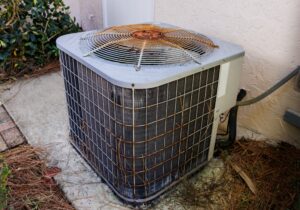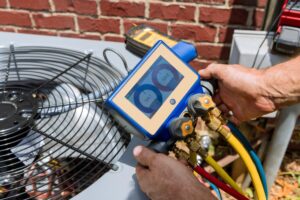When it’s time to invest in a new heating system, you have an array of decisions to make. And, as if choosing the right type of gas furnace wasn’t challenging enough, you have to determine which size unit will be appropriate for your home. While it might seem like a simple matter of picking the biggest one you can afford, the reality is far more complex. Choosing the wrong size furnace — whether it’s too small or too large — can lead to inefficiency, higher energy bills, and a less comfortable home.
Because the process of choosing a furnace size is tricky, it’s in your best interest to work with a professional HVAC technician. So, if you’re struggling to answer the question, “What size furnace do I need?” — turn to the experts at H.J. Faust, Inc. We’ll help you choose and install a furnace that is perfectly sized for your home so that it keeps your family warm and your energy costs low.
Why Furnace Size Matters
Your furnace’s size directly impacts its ability to heat your home effectively and efficiently. But what does “furnace size” actually mean? In the HVAC world, size refers to the unit’s heating capacity, measured in BTUs (British Thermal Units). The higher the BTUs, the more heat the furnace can produce. Of course, as we mentioned previously, this doesn’t mean you should default to a unit with the most BTUs. Otherwise, you could be left paying for a range of issues:
- An undersized furnace will struggle to heat your home, leading to uneven temperatures and forcing the unit to work overtime. This not only increases wear and tear but also raises energy costs.
- An oversized furnace, on the other hand, can lead to frequent cycling on and off, which wastes energy, causes uneven heating, and reduces the lifespan of the system.
In short, it’s critical to take the time to accurately determine furnace size before making a purchase.
How to Choose the Right Size Furnace for Your Home
Several factors play a role in determining the right furnace size for your home. While some homeowners might attempt to calculate this themselves, the process involves complex considerations that are best handled by an HVAC professional.
Square Footage of Your Home
One of the first steps in determining what size furnace you need is measuring your home’s square footage. Larger homes require more BTUs to maintain a consistent temperature throughout the space. Generally, you’ll need about 30-60 BTUs per square foot of living space. However, this is just a starting point, as other factors significantly influence the final calculation.
Climate Zone
Burlington, WI, experiences harsh winters, making climate a crucial factor. Homes in our region typically need more powerful HVAC systems than those in milder climates, even if the square footage is the same. For example, since Burlington is in a Zone 5 climate, you will be best off aiming for a furnace with 50-60 BTUs. Working with a local professional, such as H.J. Faust, ensures that regional weather patterns have been accounted for when sizing your furnace.
Home Insulation
The quality and quantity of your home’s insulation also significantly impacts furnace size requirements. Well-insulated homes retain heat better, allowing you to choose a furnace with a lower British Thermal Unit rating. Conversely, older homes with poor insulation may require a more powerful furnace to offset heat loss.
Number of Windows and Doors
When evaluating furnace sizes, you must also take into account the condition and placement of your windows and doors. They can act as weak points where heat escapes, and the more you have — or the less energy-efficient they are — the harder your furnace has to work. Upgrading to energy-efficient windows and doors can sometimes allow for a smaller furnace.
Ceiling Height
Homes with high ceilings require more heating power than those with standard ceiling heights. This is because warm air rises, creating a larger volume of space to heat. If you have vaulted ceilings or open floor plans, you will benefit from a larger, more efficient furnace.
Ductwork Condition
Your ductwork plays a critical role in distributing warm air. Poorly designed or leaking ducts can affect how much heat reaches your living spaces, influencing your furnace size requirements.
How Professionals Calculate Furnace Size
To accurately determine furnace size, HVAC professionals use a process called a Manual J Load Calculation. This comprehensive evaluation takes into account all the factors mentioned above, along with additional details such as:
- Sun exposure and orientation of your home
- Occupancy and household habits
- Local building codes
Using specialized software, technicians perform precise Manual J Calculations to ensure you get an appropriately sized furnace for your needs.
Ready to Find the Perfect Furnace? Contact H.J. Faust Today!
Choosing the perfect furnace size for your home is a decision that can impact your comfort, energy bills, and the lifespan of your heating system. Don’t leave it to chance. Let the experts at H.J. Faust in Burlington, WI, handle everything from selecting the right unit to installing it with precision.
Contact us today to schedule a furnace installation and ensure your home stays warm and cozy all winter long. If you’re ready to install a new furnace, we’re here to help you make the right choice!



